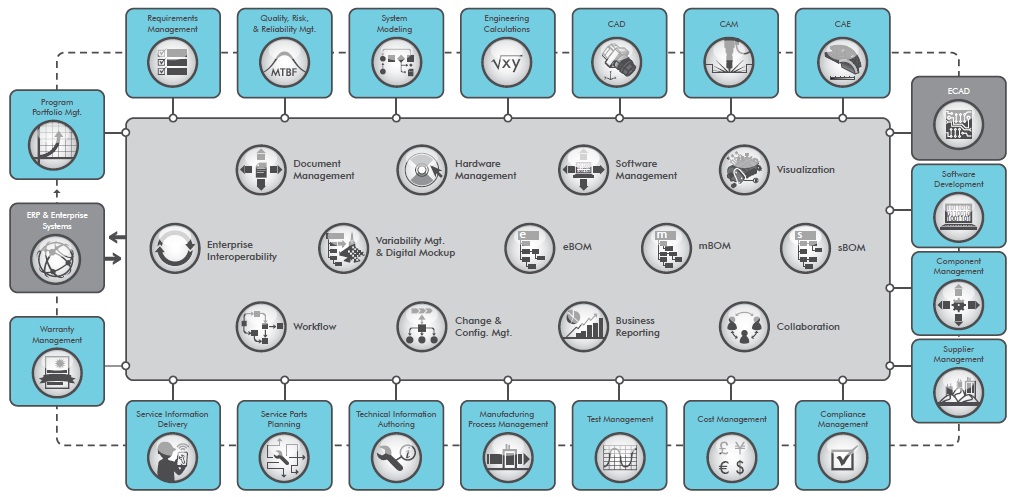PLM
 Product Lifecycle Management, or PLM,
Product Lifecycle Management, or PLM,
is a driver of successful product development, and a strategic contributor to business value across the enterprise. PLM helps product manufacturers manage complex, cross-functional processes, coordinating the efforts of distributed teams to consistently and efficiently create the best possible products.
The principal role of Product Lifecycle Management (PLM) is to manage a product’s definition from concept to retirement.
To be effective, PLM solutions must completely define all aspects of the product’s Bill of Materials (BOM) – including mechanical and electrical design files (MCAD, ECAD), software, documentation, and service information. PLM enables the definition and synchronization of cross-functional views of the BOM: engineering (eBOM), manufacturing (mBOM), and service (sBOM).
Directly, PLM offers significant value to a company, but PLM also enhances other enterprise systems (ERP, CRM) by enabling the sharing of product information throughout the organization.
PLM offers broad and deep capabilities, including:
- Requirements management
- Product data management
- Visualization and digital mockup
- Program & portfolio management
- Change and configuration management
- Manufacturing process management
- Quality management
The result is improved profitability through:
- Increased revenue via successful product introductions
- Reduced product and development cost
- Accelerated time to market
- Improved product quality
